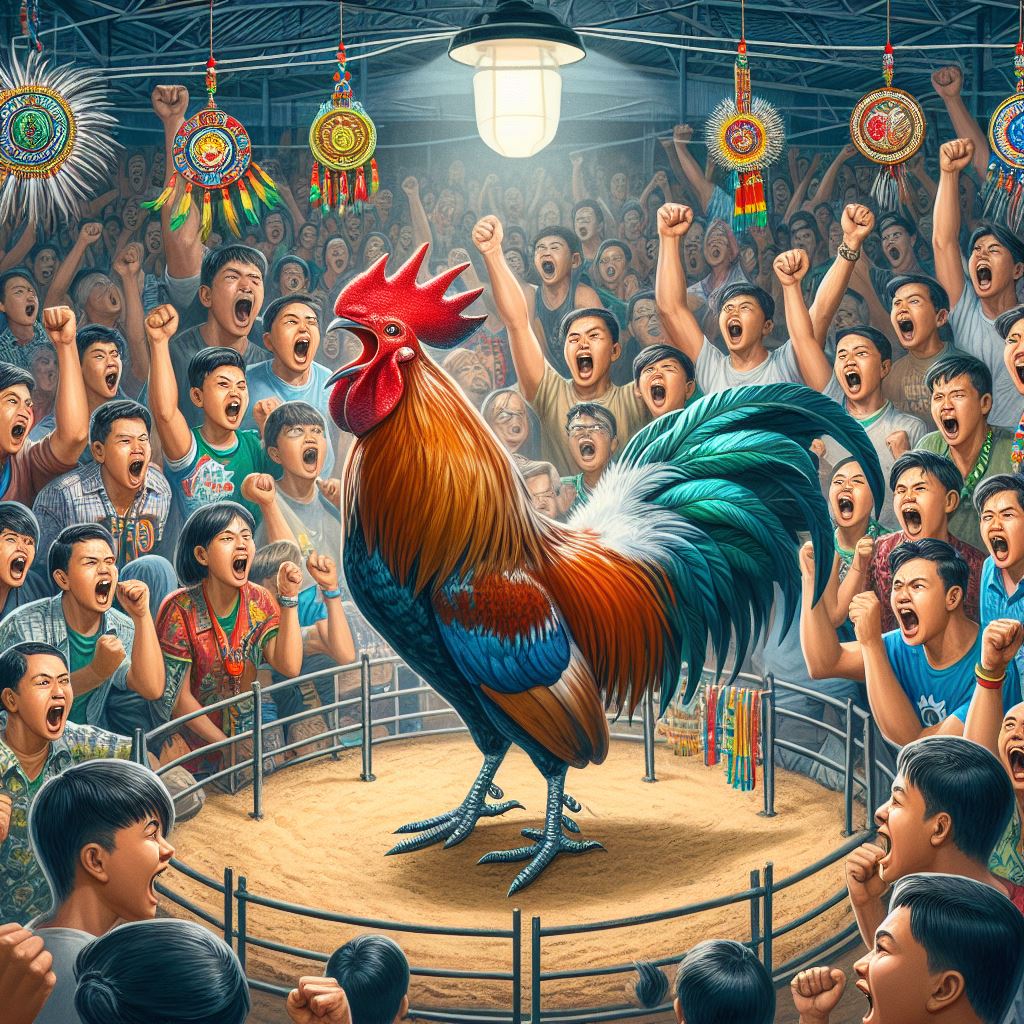You might have heard the buzz about sabong superstitions. Sabong it’s a tradition loaded with cultural beliefs and myths. These superstitions can significantly influence the participants’ behavior and even the outcomes of matches.
Common Superstitions in Sabong
Wearing Lucky Colors
Wearing lucky colors is a common superstition among participants, particularly in events like bird fights. Red, in particular, holds significant symbolism, representing strength and vitality. It’s a prevalent choice among trainers and bettors, who don red garments during matches, hoping to imbue their birds with energy and luck. This tradition is rooted in cultural beliefs and traditions, with many attributing power to the color red. Wearing red may also serve as a psychological boost for participants, instilling confidence and a sense of control over the outcome. While there’s no scientific evidence to support the efficacy of wearing specific colors for luck, the practice persists as a cherished tradition in various competitive arenas.
Pre-Fight Rituals
Pre-fight rituals are a significant part of the preparation process for handlers in cockfighting. It’s not uncommon to witness handlers whispering to their roosters before a match. While it may seem like a mere formality, handlers genuinely believe in the power of these whispered words to bolster the courage and determination of their birds. Some handlers take it a step further by blessing their roosters with special incantations or holy water, seeking divine favor and protection for their feathered fighters. These rituals are deeply ingrained in the cultural and spiritual beliefs surrounding cockfighting, reflecting the reverence and dedication that handlers have for their birds.
Lucky Charms and Amulets
Lucky charms and amulets play a significant role in the world of cockfighting. Participants frequently carry these talismans, ranging from special coins to small figurines, with the belief that they possess the power to attract good fortune and repel negative energies. These objects hold deep symbolic meaning for those involved in the sport, serving as tangible reminders of luck and protection. While skeptics may view these practices as mere superstition, their presence underscores the deeply held beliefs and rituals that permeate the world of cockfighting. In a sport where every advantage is sought after, the use of lucky charms and amulets remains a time-honored tradition, weaving together elements of faith, culture, and the pursuit of victory.
First Blood
In cockfighting exists a curious superstition regarding the significance of drawing first blood. It is widely believed among participants that the rooster who inflicts the first wound is destined to lose the match. While this notion may seem peculiar to outsiders, it is taken very seriously within the community. When a rooster draws first blood, it sparks a flurry of anxiety among handlers and bettors, who interpret it as a foreboding sign of misfortune for that particular bird. This belief underscores the deeply entrenched superstitions and rituals that accompany the sport of cockfighting, where every action and outcome is scrutinized for its perceived implications. Despite lacking any empirical evidence, the superstition surrounding first blood is a testament to the enduring power of tradition and belief in the world of competitive animal combat.
How Beliefs Influence Behavior and Outcomes
Now, let’s look into how these superstitions affect people’s actions and potentially the outcomes of matches.
Beliefs like these heavily influence betting patterns. If you talk to seasoned bettors, they often have their own sets of rules influenced by myths in sabong. They’ll place bets based on their “analysis” of these superstitions, which sometimes deviates from logical reasoning.
Handlers incorporate these beliefs into their training regimens. A handler who believes in lucky colors might dress their rooster in specific colored cloth during practice sessions. This psychological preparation can affect how they train and, subsequently, how the rooster performs.
Believers in superstitions are often more anxious on match day. Nerves can translate to distracted handling, which could impact the outcome. If a handler is too focused on following rituals instead of the match, this could easily sway the fight’s results.
Superstitions vary across different cultures. In some regions, participants believe in the alignment of stars or moon phases. These cultural beliefs in cockfighting can heavily influence both preparation and actual performance during the matches.
The Psychological Edge
Interestingly, superstitions can also offer a psychological edge. Believing in a higher power or ritual can give participants a sense of control. This confidence often translates to better decision-making and composure, which are critical in high-stakes environments.
Having a set routine or lucky charm can make handlers feel empowered. This control over fate, even if illusory, can boost their confidence. A confident handler is better poised to execute strategies effectively.
Believers often think that this psychological edge extends to the roosters as well. The bond between the handler and the bird can become stronger through shared belief in their luck rituals. This connection can motivate the rooster, potentially making it fight harder and smarter.
Can Beliefs Materially Affect Outcomes?
 Exploring the scientific angle behind superstitions in cockfighting reveals intriguing insights. While empirical evidence directly linking superstitions to match outcomes is lacking, research suggests that the psychological effects of these beliefs can play a crucial role. Confidence, focus, and psychological preparedness are all factors known to influence performance in competitive settings.
Exploring the scientific angle behind superstitions in cockfighting reveals intriguing insights. While empirical evidence directly linking superstitions to match outcomes is lacking, research suggests that the psychological effects of these beliefs can play a crucial role. Confidence, focus, and psychological preparedness are all factors known to influence performance in competitive settings.
For trainers, superstitions can serve as psychological anchors, bolstering their confidence and providing a sense of control in an inherently uncertain environment. This enhanced mindset can translate into more focused and effective coaching strategies, ultimately benefiting the performance of both the trainer and the rooster.
The concept of self-fulfilling prophecies may come into play. If a trainer genuinely believes in the power of a particular superstition, their actions and behaviors may inadvertently contribute to the fulfillment of that belief. This phenomenon underscores the complex interplay between belief, perception, and behavior, highlighting the potential for superstitions to influence outcomes indirectly through their effects on human psychology.
The bond between trainer and rooster shouldn’t be underestimated. Research has shown that animals can pick up on subtle cues from their human counterparts, including emotional states and levels of confidence. Thus, a trainer’s belief in superstitions could indirectly influence the rooster’s behavior and performance through the dynamics of their relationship.
While superstition can provide a sense of comfort and confidence, over-reliance on it can have significant drawbacks, particularly in the cockfighting arena. When handlers become overly fixated on rituals, they may inadvertently neglect essential aspects of proper training. This misplaced focus can lead to a lack of preparation, ultimately affecting the performance of both handler and rooster in the heat of competition.
Superstitions can introduce a layer of emotional turmoil into the equation. If a cherished ritual fails to deliver the desired outcome, it can trigger feelings of disappointment, frustration, and even self-doubt. This emotional fallout can have tangible repercussions on future performance, as the handler grapples with the psychological burden of perceived failure.
The pressure to adhere to superstitions can escalate to the point where it eclipses rational decision-making. Handlers may find themselves prioritizing rituals over sound strategic choices, compromising their ability to adapt and respond effectively to changing circumstances during a match.
